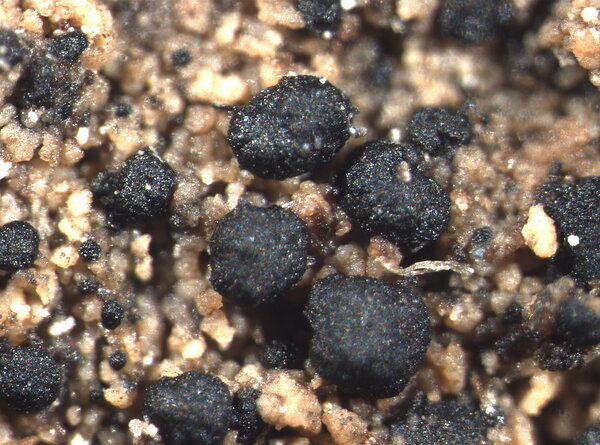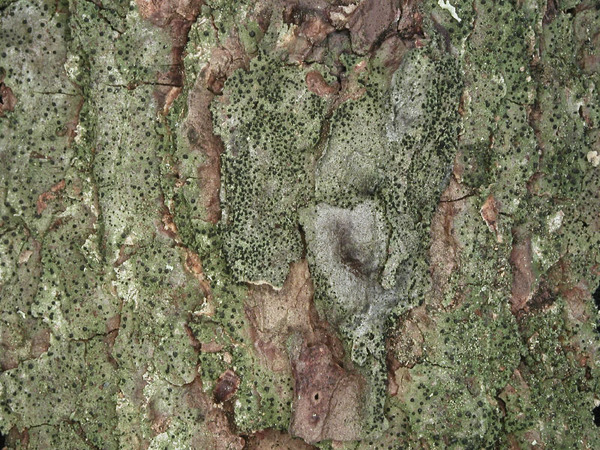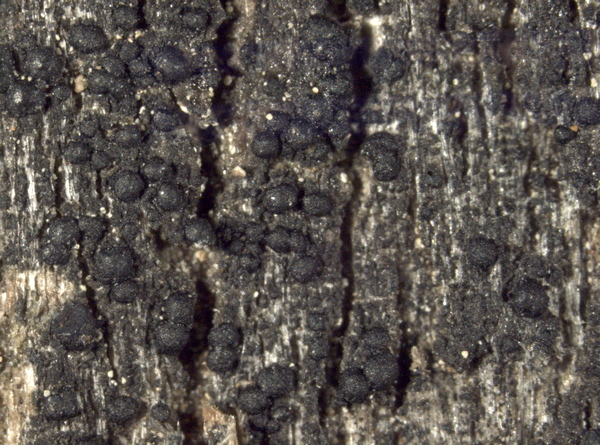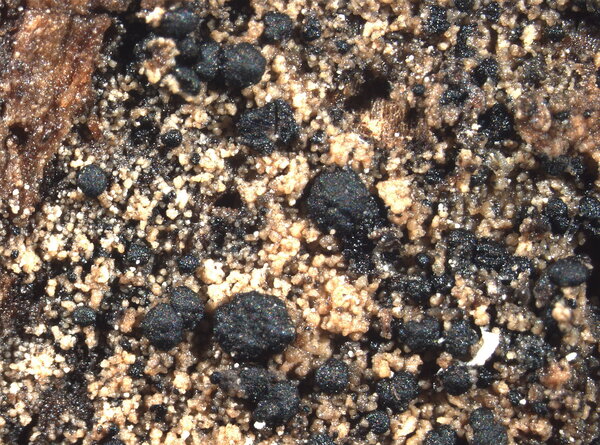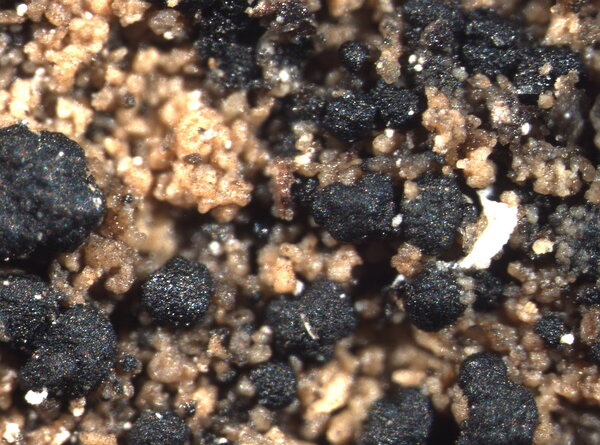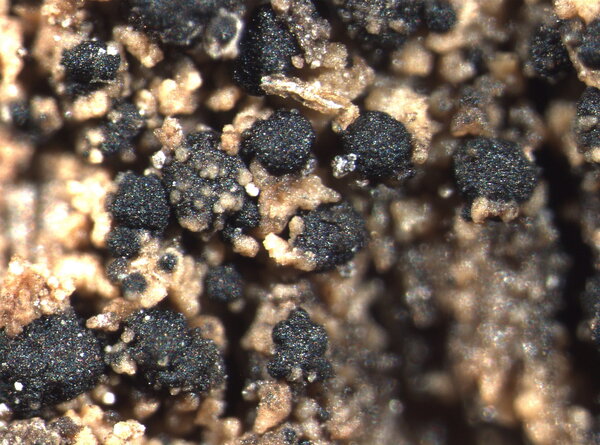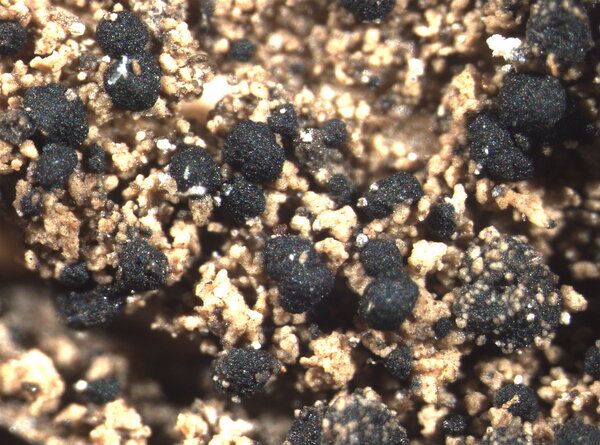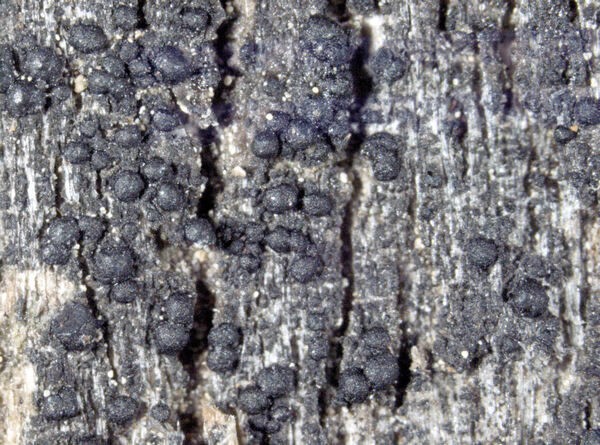Micarea melaena (Nyl.) Hedl.
Bih. K. Svenska Vetensk.-Akad. Handl., 3, 18: 82, 96, 1892. Basionym: Lecidea melaena Nyl. - Bot. Not.: 182, 1853.
Synonyms: Bacidia melaena (Nyl.) Zahlbr.; Biatora stizenbergeri Hepp; Bilimbia melaena (Nyl.) Arnold; Catillaria constristans sensu H. Magn.; Lecidea ilyophora Stirt.
Distribution: N - Ven (Nascimbene 2008c), TAA (Thor & Nascimbene 2007, Nascimbene & al. 2007b, 2008c, 2014, 2022, Nascimbene 2008b, 2013, 2014, Nimis & al. 2015), Lomb, Piem, Emil (Fariselli & al. 2020). C - Tosc (Tretiach & al. 2008). S - Pugl.
Description: Thallus crustose, thinly episubstratic, continuous, granulose or areolate, yellowish brown, pale green or dark greenish grey, rarely almost black in sun-forms. Apothecia micareoid, black, 0.1-0.5 mm across, with a strongly convex, sometimes tuberculate, globulose disc and sometimes a very thin, soon excluded proper margin. Proper exciple absent or indistinct in young apothecia, pigmented like the hymenium of branched and anastomosing, paraphysis-like hyphae; epithecium hardly differentiated from the hymenium; hymenium aeruginose black or blackish purple-green and light purplish or blackish-purple in lower part, K+ intensifying green, 30-40 µm high; paraphyses numerous, coherent, branched and anastomosing, 0.5-1 µm thick, sometimes a few 1.5-2 µm thick, simple, coated with dense pigment; hypothecium dull purplish black, K– or K+ intensifying and K+ green black; the walls of hyphae coated with a dense dark pigment. Asci 8-spored, clavate, in K/I with a blue outer layer and apical dome and unstained wall, the dome with an apical cushion, 30-40 x 10-15 μm. Ascospores (1-)3(-5)-septate, hyaline, ovoid or ovoid-oblong, with rounded ends, 12-21 x 4-6 µm. Pycnidia rare, black, of two types: a) 100-140 µm across, sessile, the wall purple brown to olive, K+ green, producing 0-7-septate, curved or hook-shaped macroconidia measuring 18-33 x 1-1.5 µm, b) 40-60 µm across, semi-immersed to sessile, the wall green, K-, producing fusiform-cylindrical, straight microconidia measuring 4.5-7(-8) x 0.5-1.2 µm. Photobiont micareoid, the cells 4-7 μm wide. Spot tests: thallus K-, C- or C+ red, P-; apothecial sections C-. Chemistry: thallus with gyrophoric acid in variable amounts.
Note: a cool-temperate to circumboreal-montane species found on decomposed lignum of old stumps, but also on plant debris, siliceous rocks and soil rich in humus, mostly in humid upland areas; widespread in the Alps and the Northern Apennines.
Growth form: Crustose
Substrata: lignum, soil, terricolous mosses, and plant debris
Photobiont: green algae other than Trentepohlia
Reproductive strategy: mainly sexual
Commonnes-rarity: (info)
Alpine belt: absent
Subalpine belt: rather rare
Oromediterranean belt: absent
Montane belt: rather rare
Submediterranean belt: absent
Padanian area: absent
Humid submediterranean belt: absent
Humid mediterranean belt: absent
Dry mediterranean belt: absent
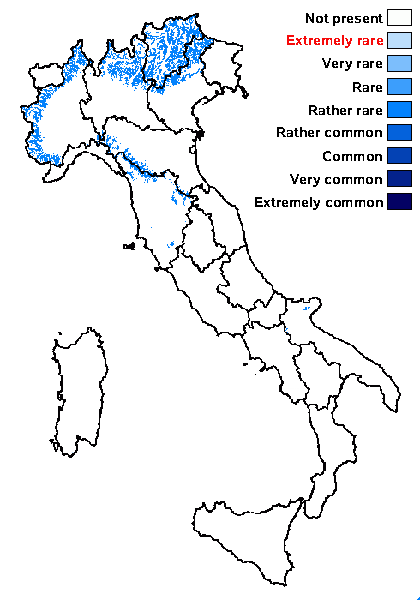
Predictive model
Herbarium samples
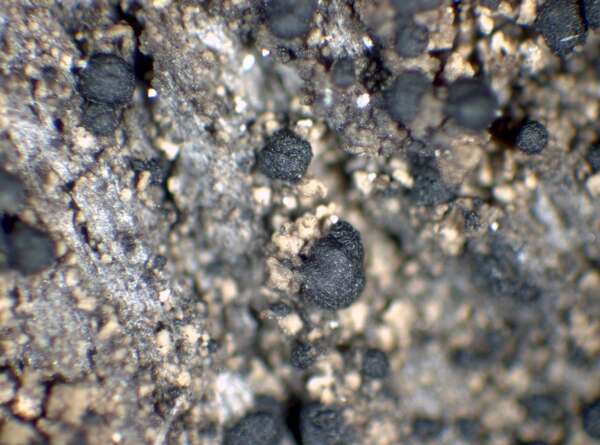

P.L. Nimis; Owner: Department of Life Sciences, University of Trieste
Herbarium: TSB (3226)
2001/11/27
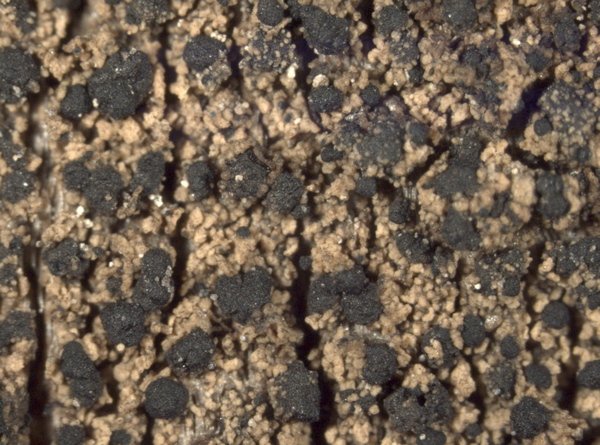

E. Pittao; Owner: Department of Life Sciences, University of Trieste
Herbarium: TSB (TSB 3226)
20.10.2009
Growth form: Crustose
Substrata: lignum, soil, terricolous mosses, and plant debris
Photobiont: green algae other than Trentepohlia
Reproductive strategy: mainly sexual
Commonnes-rarity: (info)
Alpine belt: absent
Subalpine belt: rather rare
Oromediterranean belt: absent
Montane belt: rather rare
Submediterranean belt: absent
Padanian area: absent
Humid submediterranean belt: absent
Humid mediterranean belt: absent
Dry mediterranean belt: absent

Predictive model
| Herbarium samples |


P.L. Nimis; Owner: Department of Life Sciences, University of Trieste
Herbarium: TSB (3226)
2001/11/27


 Index Fungorum
Index Fungorum
 GBIF
GBIF
